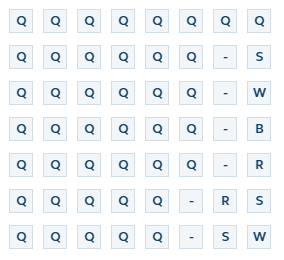주식 코드 명명 규칙
미국 주식 시장의 주식 코드 명명 규칙 요점
주식 코드의 구성
주식 코드는 일반적으로 1-4개의 문자로 구성되지만 예외가 있습니다.
나스닥에 상장된 주식은 일반적으로 4자 코드를 가지는 반면 뉴욕 증권 거래소에 상장된 주식은 일반적으로 3자 이하입니다.
주식 코드는 문자, 숫자를 포함할 수 있으며 때로는 하이픈과 같은 특수 문자를 포함할 수 있습니다.
회사는 Apple Inc.의 주식 코드 AAPL과 같이 이름이나 브랜드를 나타내는 주식 코드를 선택할 수 있습니다.
주식 코드는 또한 같은 회사의 다른 종류의 주식을 구별하는 데 사용될 수 있습니다. 예를 들어 구글의 A종과 C종 주식은 각각 GOOGL과 GOOG로 표시됩니다.
주식 코드 할당
주식 코드는 회사가 상장될 때 증권 거래소(뉴욕 증권 거래소 또는 나스닥과 같은)에 의해 할당됩니다.
회사는 일반적으로 선호하는 주식 코드를 요청할 수 있지만 거래소가 최종 승인 권한을 가집니다.
거래소는 혼동을 방지하기 위해 기존 코드와 너무 유사한 코드 할당을 피하려고 합니다.
코드가 이미 사용 중인 경우 거래소는 구별하기 위해 추가 문자나 숫자를 추가할 수 있습니다.
거래소는 일반적으로 기존 코드와 충돌하지 않는 한 회사의 선호 주식 코드를 거부하지 않습니다.
기타 고려사항
주식 코드는 때로는 이름의 약어뿐만 아니라 회사의 브랜드나 정체성을 반영할 수 있습니다.
회사는 합병, 리브랜딩 또는 기타 주요 변경을 겪을 때 주식 코드를 변경할 수 있습니다.
주식 코드는 주식에만 국한되지 않습니다 - ETF 및 뮤추얼 펀드와 같은 기타 금융 상품에도 사용됩니다.
홍콩 증권 거래소 주식 약칭 명명 규칙 (원문 그대로)
자세한 정보는 홍콩 증권 거래소의 공식 발표를 참조하세요. 여기를 클릭하여 확인하세요.
주식 증권

Q - 최대 8자, 상장 회사 이름을 나타냅니다.
S - 제2 상장 심볼.
W - 다른 의결권 구조를 가진 회사를 위한 심볼.
B - 생명공학 회사를 위한 심볼.
R - 인민폐 거래를 위한 심볼.
RS - 미국 연방 증권법에 의해 제한(RS) 증권으로 정의된 증권.
RS에 대한 자세한 정보는 여기를 클릭하세요.
참고: 위에서 언급한 인민폐 거래 제품의 주식 약칭 명명 규칙은 2012년 5월 23일에 발효되었습니다. 2012년 5월 23일 이전에 상장된 관련 제품 유형의 주식 약칭은 변경되지 않습니다.
병행 거래 기간 동안(있는 경우) 심볼은 원래 주식 페이지와 임시 주식 페이지를 식별하는 데 사용됩니다.
홍콩 예탁 영수증
Q - 최대 5자, 발행인 및/또는 관련 기초 주식을 나타냅니다.
DR - 예탁 영수증 심볼.
S - 제2 상장 심볼.
참고: 미국 연방 증권법에 의해 제한 증권으로 정의된 홍콩 예탁 영수증은 현재 중국어 주식 약칭이 없습니다.
주식 워런트
Q - 최대 5자, 관련 기초 주식 이름을 나타냅니다.
Year - 만료 연도.
Month - 만료 월.
단위 신탁

Q - 최대 5자, 관련 기초 주식 이름을 나타냅니다.
SS - 단위 신탁 심볼.
증권 코드 할당 계획

RS에 대한 자세한 정보는 여기를 클릭하세요.
위는 주식 약칭 명명 규칙의 요점입니다. 자세한 정보는 홍콩 증권 거래소의 관련 발표를 참조하세요.